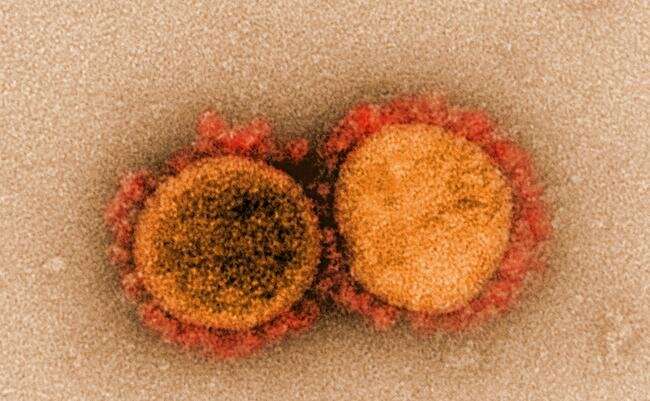
Hospitals across the United States have gone to great lengths to implement infection control measures to prevent transmission of SARS-CoV-2. And yet, as the pandemic has unfolded, many health care settings have experienced clusters of cases, with the virus spreading among patients, staff or both. Some clusters have been easily traced back to break rooms and shared meals. But other clusters have been challenging to trace and contain.
In September 2020, Brigham and Women’s Hospital detected a cluster of infections that would ultimately include 14 patients and 38 staff members. The hospital rapidly activated its incident command structure in order to coordinate a controlled response to contain the cluster. Steps taken included widespread and repeated testing of patients and staff, increased attention to staff wearing eye protection, patients wearing masks, re-emphasis on the principles of safe eating, and the pre-emptive use of precautions in uninfected patients.
As part of the response to the cluster, Brigham researchers also conducted a case-control study and whole-genome sequencing to identify factors that may have been involved in the virus’s spread as well as the most likely chain of transmission. The lessons gleaned from their data have helped inform infection control efforts at the Brigham and beyond. Findings are published in Annals of Internal Medicine.
“We undertook aggressive efforts to not only contain the cluster but to also try to understand what was driving transmission,” said corresponding author Michael Klompas, MD, MPH, an infectious disease physician and hospital epidemiologist in the Brigham’s Division of Infectious Diseases. “We pulled out all of the stops to contain this cluster and learned a lot in doing so. We want to share those lessons with our colleagues and the larger health care community.”
Researchers were able to trace the cluster back to a patient who tested negative for SARS-CoV-2 on a PCR test both upon admission to the hospital and then on a repeat PCR test 12 hours later. The patient, who had pulmonary disease, received nebulizer treatments, in which liquid medication is delivered as a very fine mist that a patient can breathe in. Staff noted that the patient frequently coughed, did not tolerate a mask and had indistinct speech that led many providers to come near to understand them. The patient likely infected multiple staff members as well as patients who shared a room with the patient.
As evidence of the cluster emerged, investigators used testing and tracing to identify potential cluster-related cases among staff and patients. More than 1,200 staff members were tested for SARS-CoV-2. Eleven of 385 direct contacts of case patients and 27 of 1,072 staff associated with cluster units tested positive for SARS-CoV-2. Fifteen patients and 42 employees met epidemiologic criteria for potentially cluster-related SARS-CoV-2 infection. The team used whole-genome sequencing of samples of the virus to further determine which cases were connected to the cluster. After whole-genome sequencing, 14 patients and 38 employees were included in the cluster.
Researchers conducted a case-control study to better understand what risk factors might have contributed to cases. They evaluated responses from 32 employees with cluster-related infections and 128 uninfected but exposed employees. Infected staff members were more likely to report that they:
- were present while case patients received nebulizers;
- interacted with SARS-CoV-2 positive staff members in clinical areas;
- spent more time exposed to case patients;
- were less likely to have worn eye protection.
There were no differences between case and control employees’ use of breakrooms and workrooms, amount of time spent in breakrooms and workrooms, or eating within six feet of others.
The researchers also found two cases in which staff members—a radiology technician and speech and language therapy technician—reported that they were infected despite wearing proper personal protective equipment, including surgical masks and eye protection.
“Infection control is a multi-faceted task,” said Klompas. “These cases are a reminder that masks are just one way to protect oneself; no one measure of protection is perfect. So the best defense against infection is to increase safety through many means as appropriate to a given situation. This includes testing all patients (and retesting 3-4 days after admission or every three days if getting certain procedures), assuring good ventilation, symptom screening, masking oneself, assuring others are masked, using eye protection, maintaining distance whenever possible, minimizing the duration of encounters as clinically appropriate, avoiding crowded spaces, and using good hand hygiene.”
Since September 2020, the Brigham and entities across the Mass General Brigham system have put in place additional prevention measures. These include:
- repeat testing of admitted patients;
- serial testing of every patient undergoing aerosol generating procedures (including nebulizer treatment);
- increased messaging about eye protection and the rollout of better-quality eye protection;
- increased messaging about the importance of masking for patients.
“Case clusters are the exception rather than the rule in health care settings. But this cluster and others show that if there is a cluster, we can contain it, and that there are multiple proactive measures we can take to decrease the risk of SARS-CoV-2 transmission in hospitals,” said Klompas.
Brigham and Women’s Hospital

